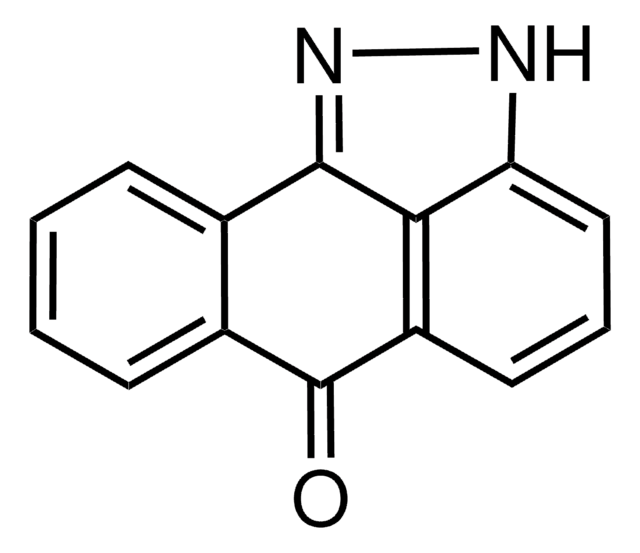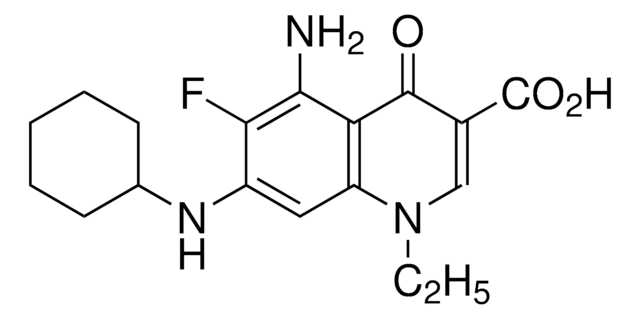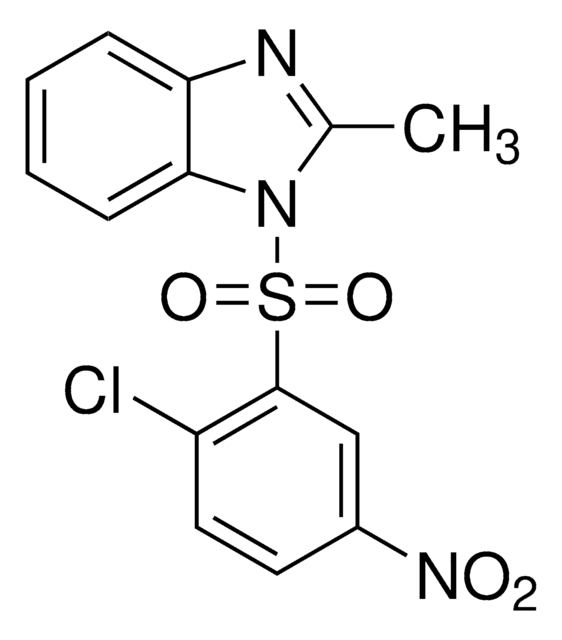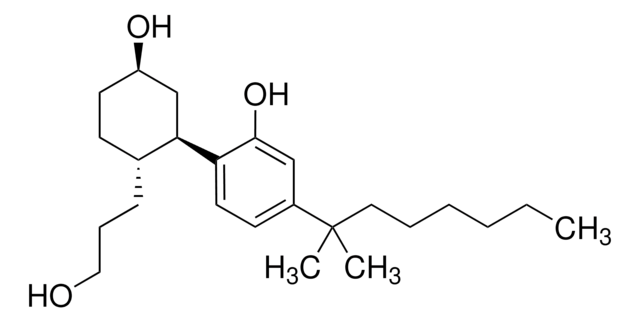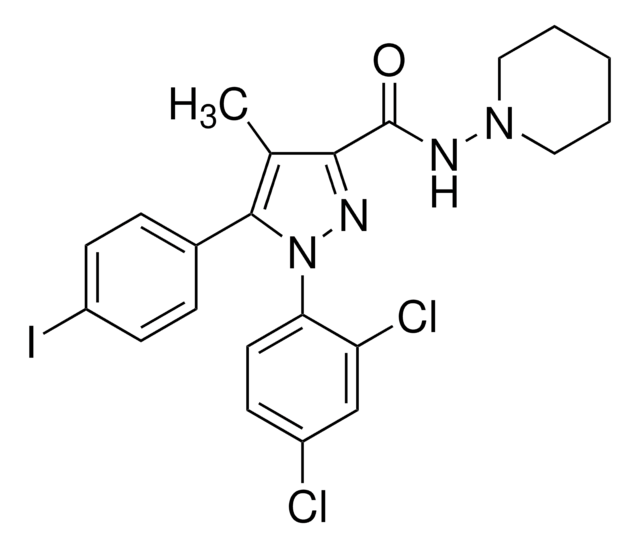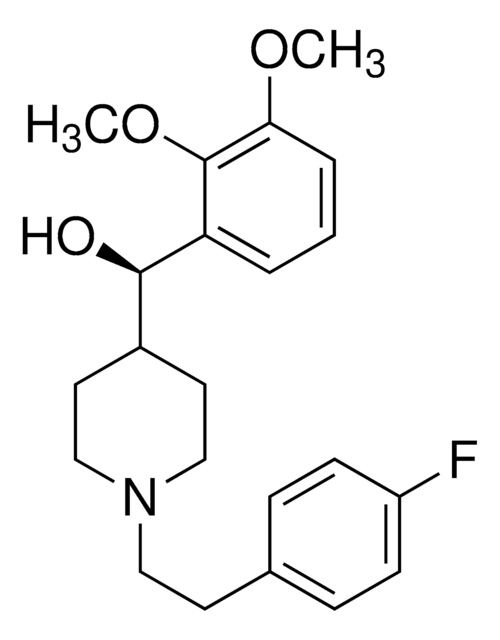SML0800
Rimonabant hydrochloride
≥98% (HPLC), powder, cannabinoid type-I receptor antagonist
Synonym(s):
5-(4-Chlorophenyl)-1-(2,4-dichlorophenyl)-4-methyl-N-1-piperidinyl-1H-pyrazole-3-carboxamide hydrochloride, SR-141716, SR-141716A, SR141716, SR141716A
About This Item
Recommended Products
product name
Rimonabant hydrochloride, ≥98% (HPLC)
Assay
≥98% (HPLC)
form
powder
storage condition
desiccated
color
white to beige
solubility
DMSO: 20 mg/mL, clear
storage temp.
2-8°C
SMILES string
CC1=C(C2=CC=C(Cl)C=C2)N(C3=CC=C(Cl)C=C3Cl)N=C1C(NN4CCCCC4)=O.Cl
InChI
1S/C22H21Cl3N4O.ClH/c1-14-20(22(30)27-28-11-3-2-4-12-28)26-29(19-10-9-17(24)13-18(19)25)21(14)15-5-7-16(23)8-6-15;/h5-10,13H,2-4,11-12H2,1H3,(H,27,30);1H
InChI key
REOYOKXLUFHOBV-UHFFFAOYSA-N
Gene Information
human ... CNR1(1268)
Application
- to study its effects on protein synthesis in C2C12 myotubes
- to analyze its effects on human astroglia
- in combination with methanandamide (mAEA) to study its effects on murine gastric vagal afferent mechanosensitivity
Biochem/physiol Actions
Features and Benefits
Signal Word
Danger
Hazard Statements
Precautionary Statements
Hazard Classifications
Acute Tox. 3 Oral - Eye Irrit. 2
Storage Class Code
6.1C - Combustible acute toxic Cat.3 / toxic compounds or compounds which causing chronic effects
WGK
WGK 3
Flash Point(F)
Not applicable
Flash Point(C)
Not applicable
Certificates of Analysis (COA)
Search for Certificates of Analysis (COA) by entering the products Lot/Batch Number. Lot and Batch Numbers can be found on a product’s label following the words ‘Lot’ or ‘Batch’.
Already Own This Product?
Find documentation for the products that you have recently purchased in the Document Library.
Customers Also Viewed
Articles
Sigma-Aldrich offers many products related to cannabinoid receptors for your research needs.
Our team of scientists has experience in all areas of research including Life Science, Material Science, Chemical Synthesis, Chromatography, Analytical and many others.
Contact Technical Service